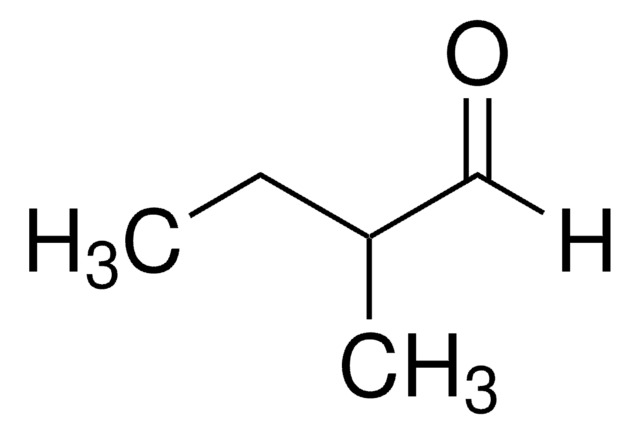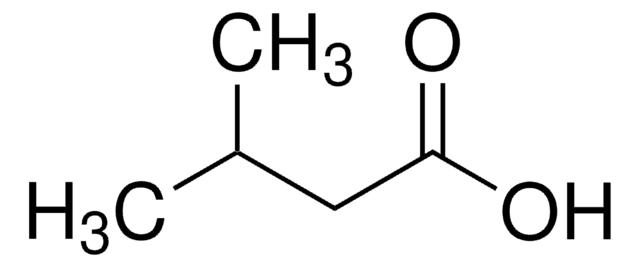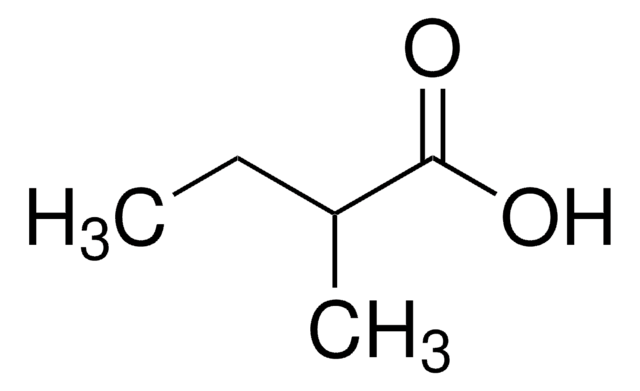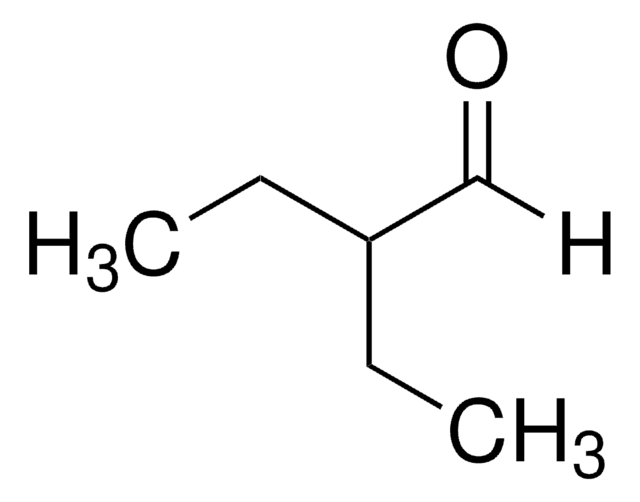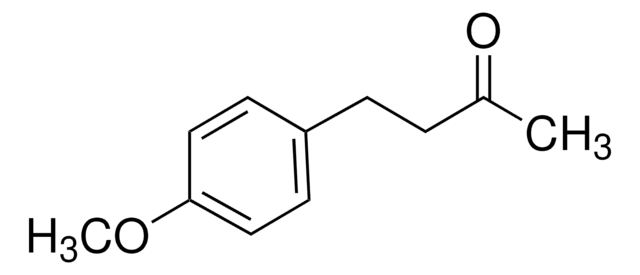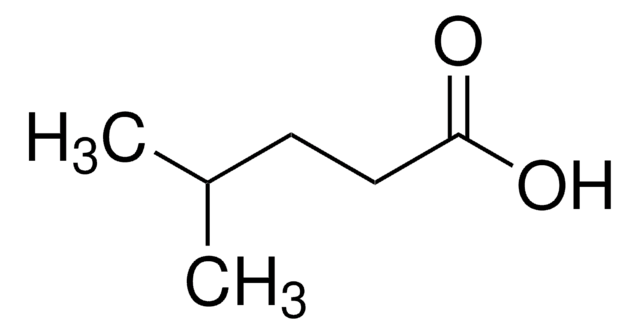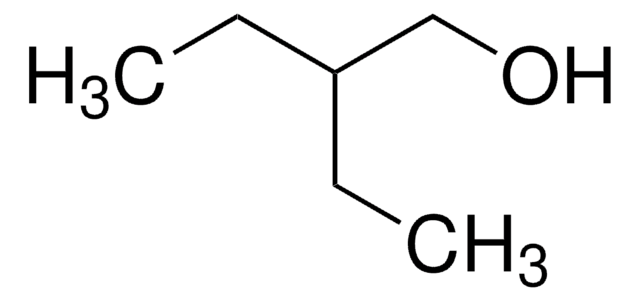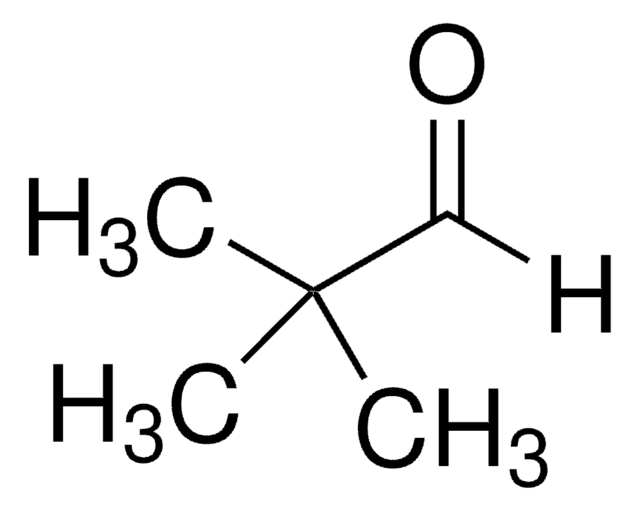M33476
2-Methylbutyraldehyde
95%
Synonym(s):
α-Methyl-n-butanal, α-Methylbutanal, α-Methylbutyric aldehyde, (±)-2-Methylbutanal, 2-Ethylpropanal, 2-Formylbutane, 2-Methylbutanal
About This Item
Recommended Products
Quality Level
Assay
95%
form
liquid
refractive index
n20/D 1.3919 (lit.)
bp
90-92 °C (lit.)
density
0.806 g/mL at 20 °C
0.804 g/mL at 25 °C (lit.)
SMILES string
[H]C(=O)C(C)CC
InChI
1S/C5H10O/c1-3-5(2)4-6/h4-5H,3H2,1-2H3
InChI key
BYGQBDHUGHBGMD-UHFFFAOYSA-N
Looking for similar products? Visit Product Comparison Guide
Related Categories
Application
- 2-amino-3-cyanopyridine derivatives via multicomponent condensation with various acetophenones and malononitrile in the presence of ammonium acetate.
- N,N-Diethyl-2-methyl-1-butanamine by reacting with diethylamine via Rh-catalyzed reductive amination reaction in the presence of molecular hydrogen.
- α-(2-Methylbutylidene)benzeneacetonitrile by condensation reaction with benzyl cyanide using tricyclic strong nonionic Lewis bases.
Signal Word
Danger
Hazard Statements
Precautionary Statements
Hazard Classifications
Aquatic Chronic 2 - Eye Irrit. 2 - Flam. Liq. 2 - Skin Sens. 1 - STOT SE 3
Target Organs
Respiratory system
Storage Class Code
3 - Flammable liquids
WGK
WGK 2
Flash Point(F)
23.0 °F
Flash Point(C)
-5 °C
Personal Protective Equipment
Choose from one of the most recent versions:
Already Own This Product?
Find documentation for the products that you have recently purchased in the Document Library.
Customers Also Viewed
Our team of scientists has experience in all areas of research including Life Science, Material Science, Chemical Synthesis, Chromatography, Analytical and many others.
Contact Technical Service